In the context of database management, observability is often associated with database monitoring. However, it’s essential to understand that monitoring is just one facet of a broader concept called database observability. This process operates in a continuous cycle, where telemetry data, including performance metrics, is collected and processed. Internal operations like queries are analyzed, followed by a tuning phase to optimize the database. This cycle is ongoing and vital for maintaining the health and efficiency of a database.
For managed services such as Oracle Autonomous Database on Dedicated Exadata Infrastructure and Cloud@Customer (ADB-D, ADB-C@C), Oracle actively engages in this observability process. It involves identifying and addressing unusual situations, frequently without customer involvement. This includes actions such as detecting incidents and initiating resolutions, like reporting an issue via a service request (SR) and making the necessary corrections.
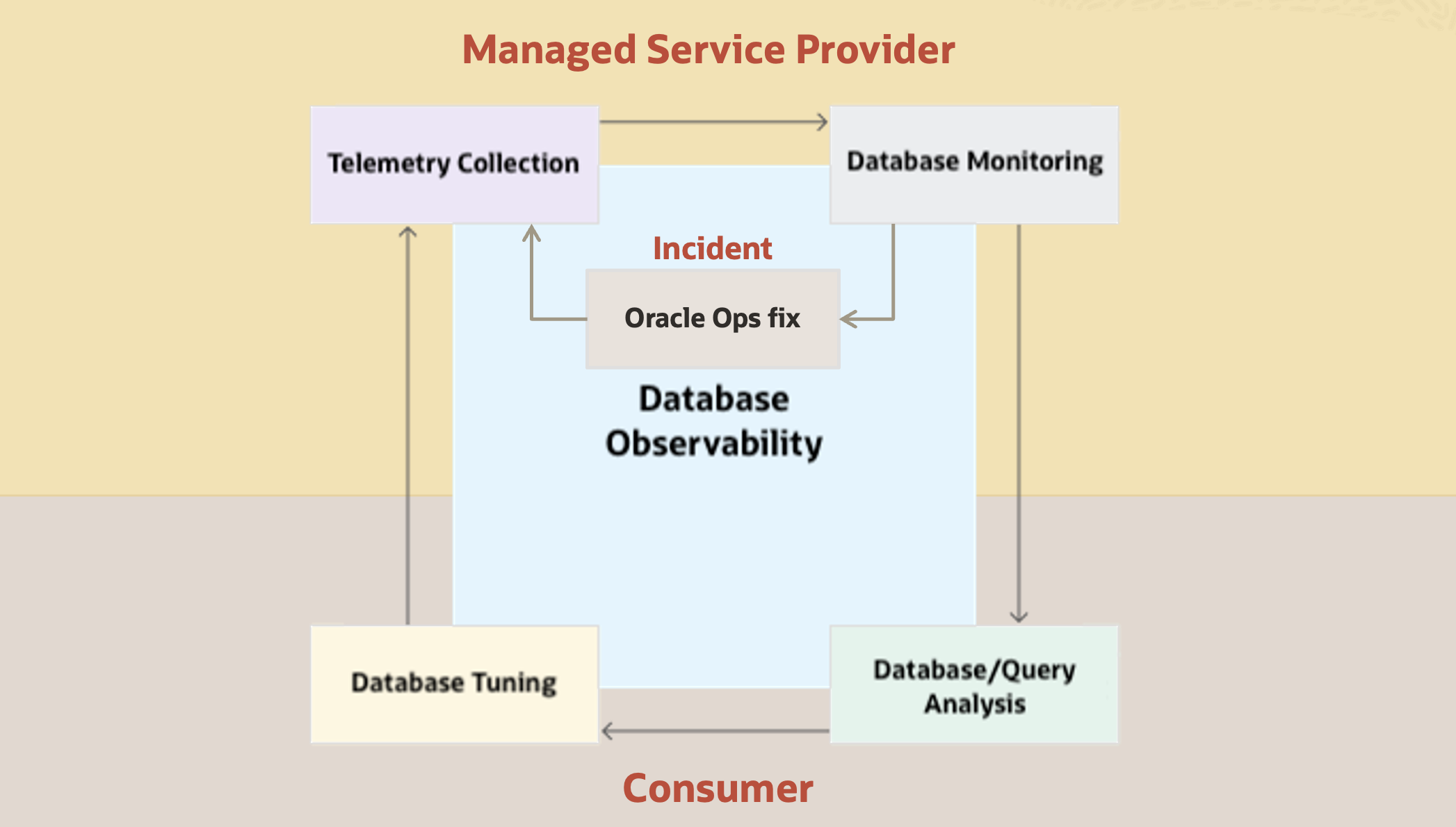
ADB’s responsibility model clearly defines the boundaries between the customer and Oracle’s responsibility. While monitoring the health, performance, queries, and updates of applications running on top of the database falls under the customer’s purview, Oracle equips users with a robust set of tools and services to efficiently carry out these tasks. Additionally, ADB supports integration with third-party observability tools (Prometheus, Grafana, etc).
Oracle provides a wide range of performance and scalability tools, both integrated into the OCI console UI and available as standalone software (such as full support for Enterprise Manager). These tools are complemented by APIs for every event, metric, or log, high availability features, capacity planning dashboards, fleet management capabilities, and security compliance features. Oracle consistently enhances its observability offerings based on customer feedback and collaborations with Oracle’s Observability and Management (O&M) platform teams.
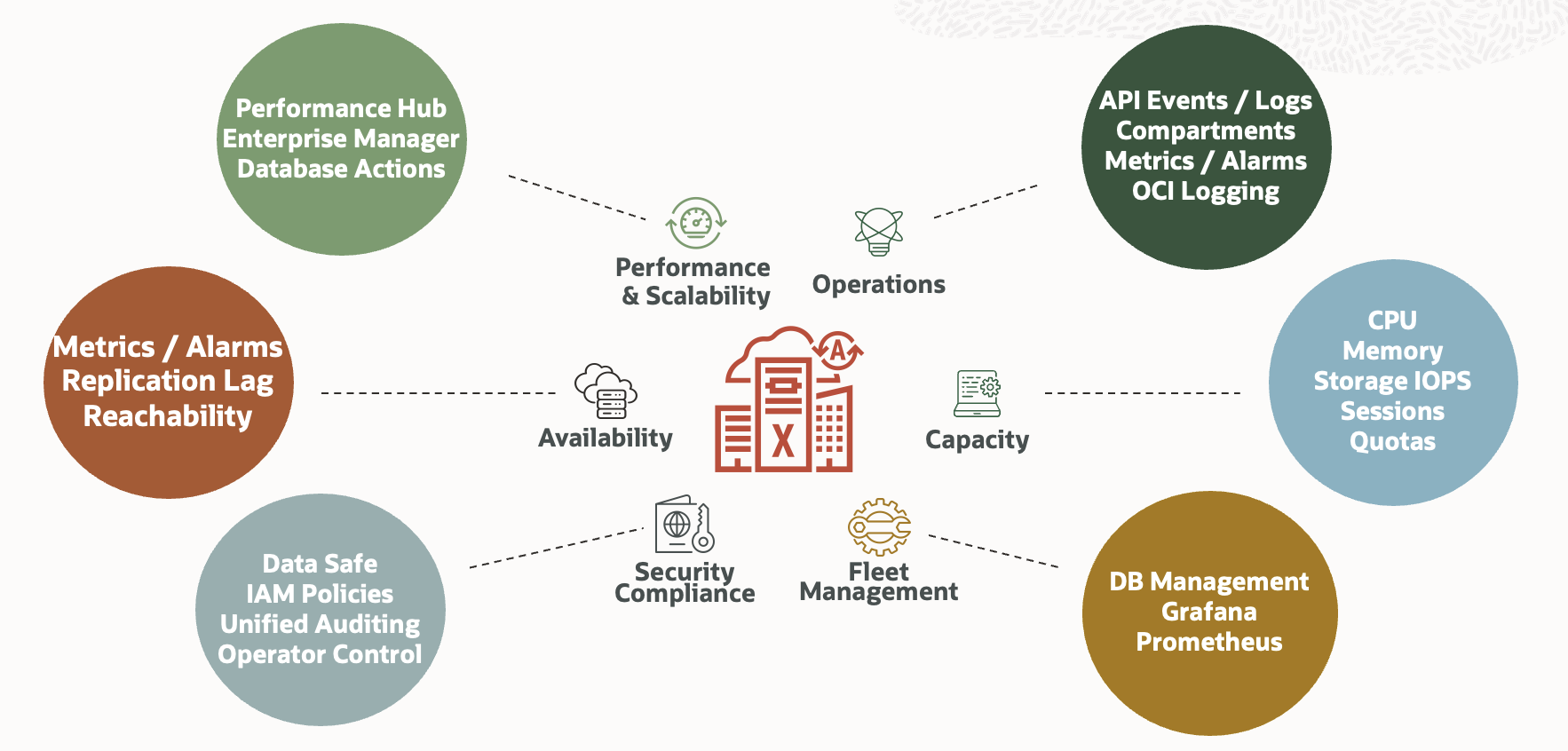
Coming back to ADB’s responsibility model, Oracle assumes the responsibility for monitoring the health of the Autonomous Database service (among many others), sending alerts and notifications at various levels of the database stack, and taking proactive actions when anomalies are detected.
Oracle’s Operations incident response leverages expertise and machine learning technology to provide consolidated monitoring of the entire database stack. Automatic service requests (SRs) are generated for deviations, including root cause analysis for each issue. Even customer-filed SRs benefit from faster responses, thanks to contextual background information collected and provided by the service. When combined with Autonomous Data Guard, Oracle offers customers a remarkable 99.995% SLA guarantee, with no ridiculous exclusions.
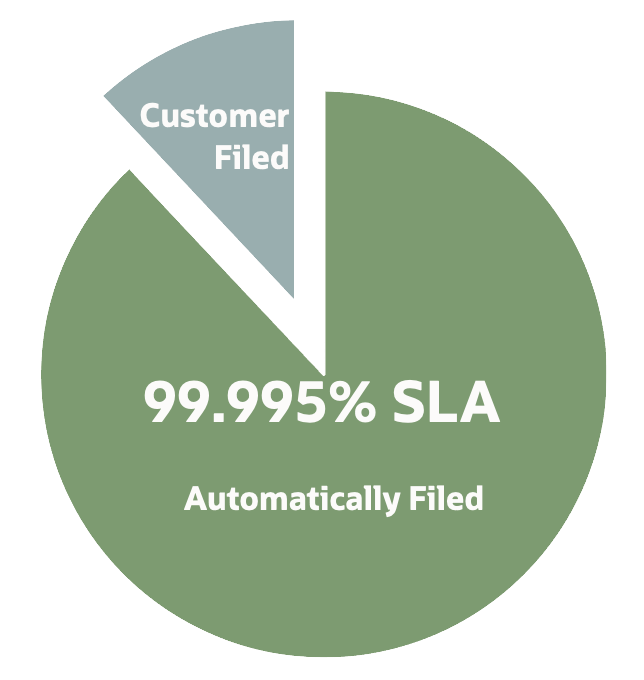
Support for alerts and notifications is crucial for effective observability. ADB-D, just like other OCI resources, generates events that inform users of resource state changes. These events can be categorized as control plane events and data plane events. Control plane events originate from customer actions via the use of public APIs, while data plane events result from issues within the database or on the host. Users can integrate these events with third-party services like Slack and PagerDuty.
ADB-D offers a comprehensive set of events at different levels of the Autonomous stack, including critical events. This ensures users have full visibility into their database operations, allowing them to set up rules and perform actions as needed.
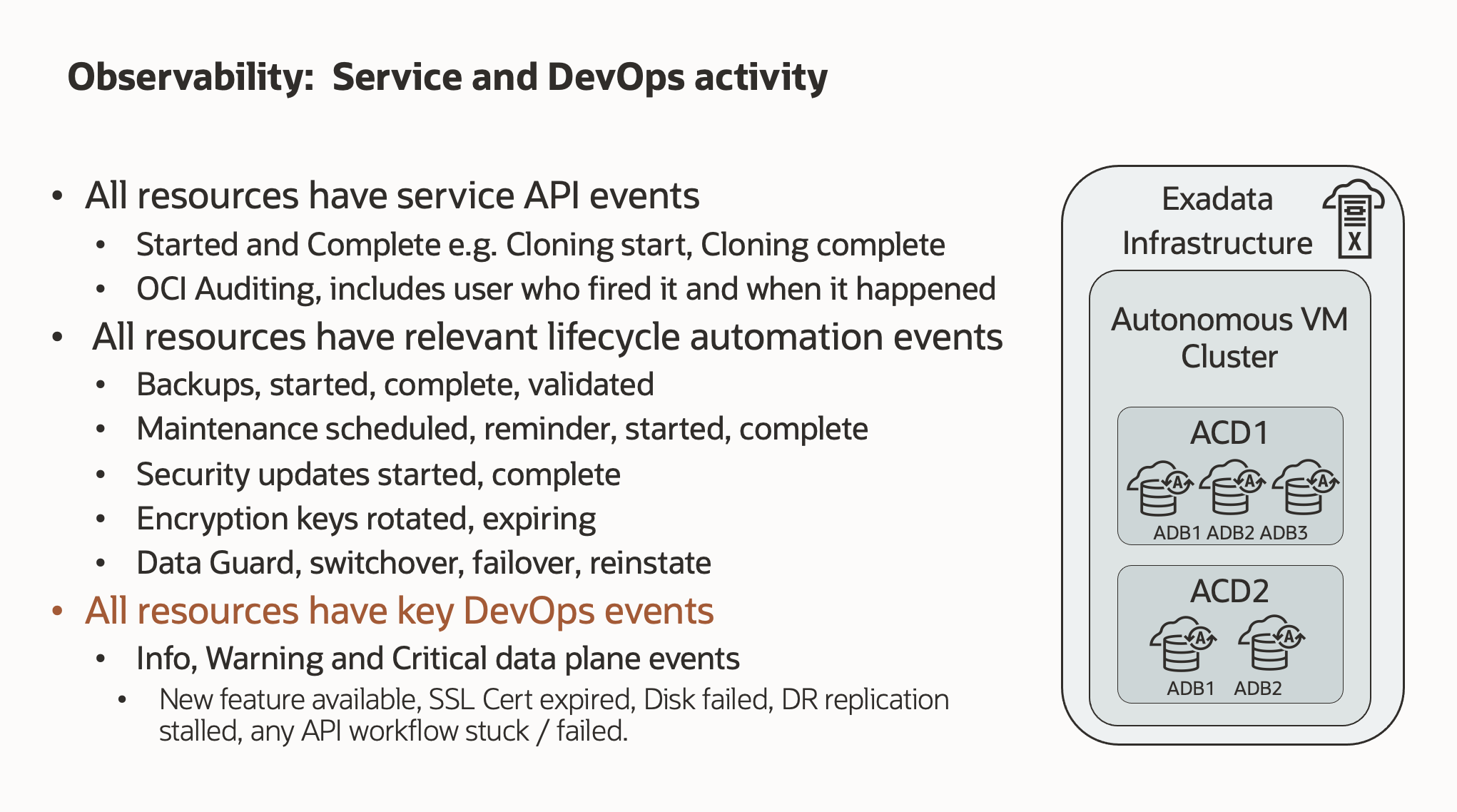
To provide customers with insights into their observability requirements, ADB-D gathers metrics periodically. These metrics help users gauge the health and performance of their databases, and Oracle works closely with customers to identify which metrics are essential for their specific observability needs. Metrics include critical data like CPU utilization, database session behavior, various storage-related statistics, and deeper metrics such as IO throughput and transport/apply lag (among others).
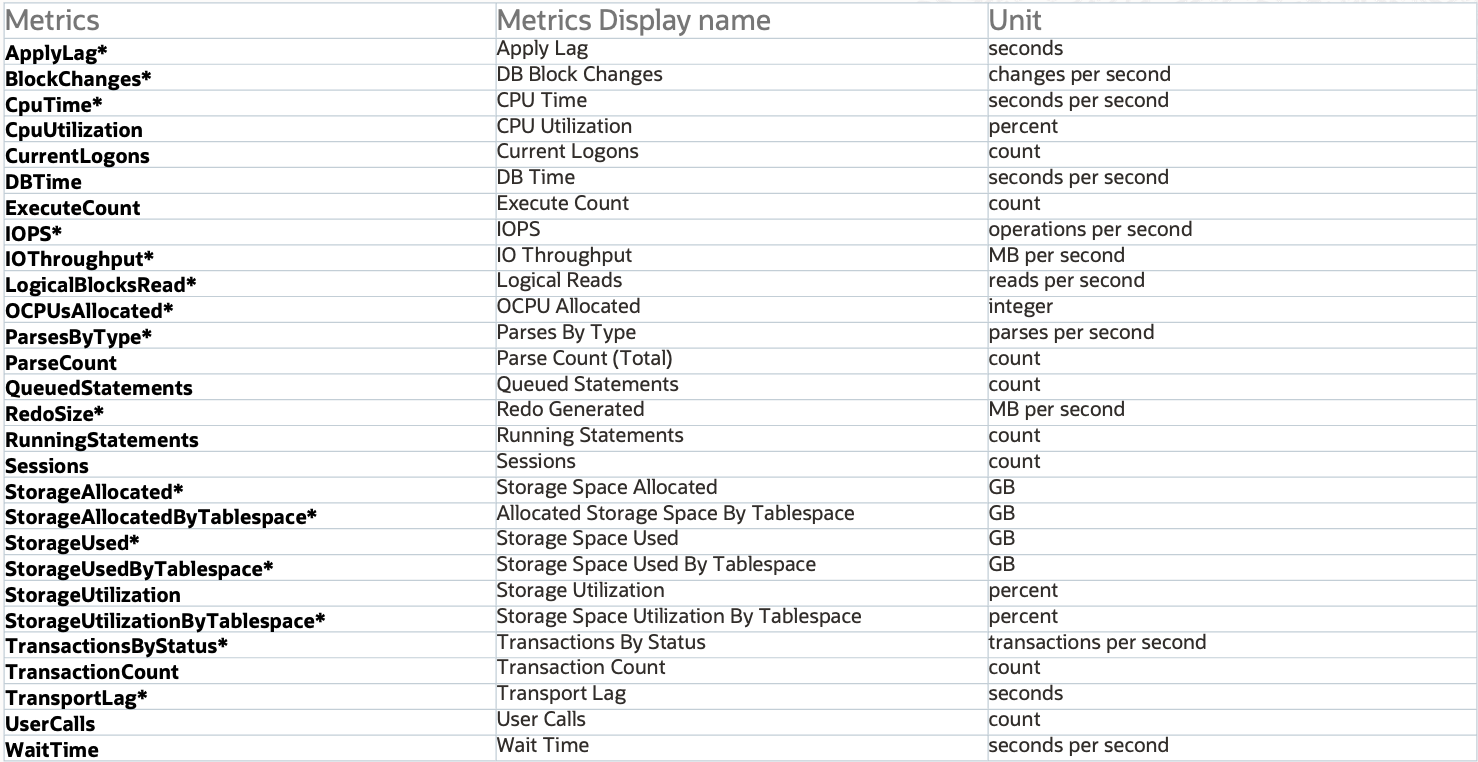
ADB-D exports this rich set of metrics to the Oracle Cloud Infrastructure (OCI) Monitoring Service, which collects metrics from all OCI resources, not just ADB-D. This allows users to set up custom alarms based on metrics like CPU utilization or automate actions based on database session behavior. The extensive storage-related metrics are invaluable for workloads heavily reliant on storage performance.
The OCI Monitoring Service plays a pivotal role in Oracle’s Observability and Management (O&M) platform, serving as a centralized aggregator for database-related data. With its rule-based triggers and support for third-party integrations, the OCI Monitoring Service is a valuable tool for setting up efficient observability processes.
In conclusion, Oracle Autonomous Database on Dedicated Exadata Infrastructure and Cloud@Customer (ADB-D, ADB-C@C) caters to the stringent observability requirements of mission-critical workloads. By actively participating in the observability cycle and providing comprehensive tools, services, and automation, Oracle empowers customers to have trust-but-verify oversight. This ensures the performance, regulatory compliance, and trustworthiness of their databases while striking the right balance between autonomy and involvement to maintain trust while mitigating risks.
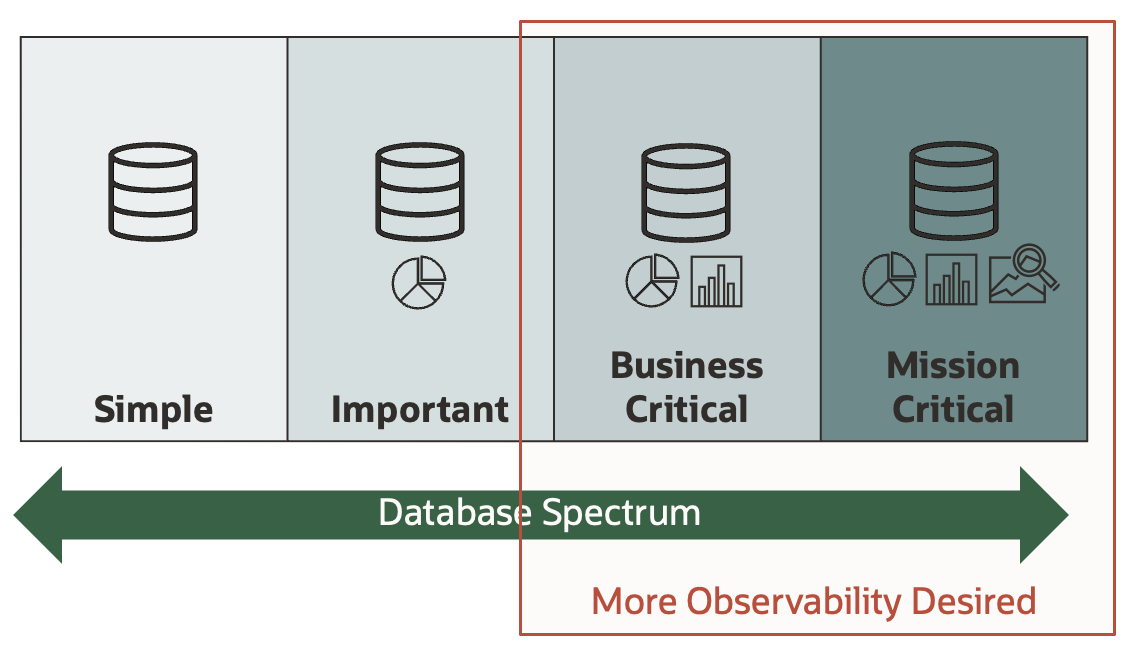
For organizations where data is the lifeblood of operations, having an observability solution that proactively identifies and mitigates issues is not just a convenience—it’s a necessity. With Oracle ADB-D, you can rest assured that your mission-critical databases are in safe hands, with the ability to meet performance expectations and regulatory obligations.
In today’s data-driven world, observability is a strategic advantage. Make the smart choice for your mission-critical workloads—choose Oracle Autonomous Database on Dedicated Exadata Infrastructure and Cloud@Customer for unparalleled observability and peace of mind.
- Learn more about Oracle Autonomous Database – Dedicated
- Read our database observability blog series (Part 1 and Part 2 that including use of 3rd party tools like Prometheus and Grafana)
- See these technologies in action in this hands-on recorded webinar
